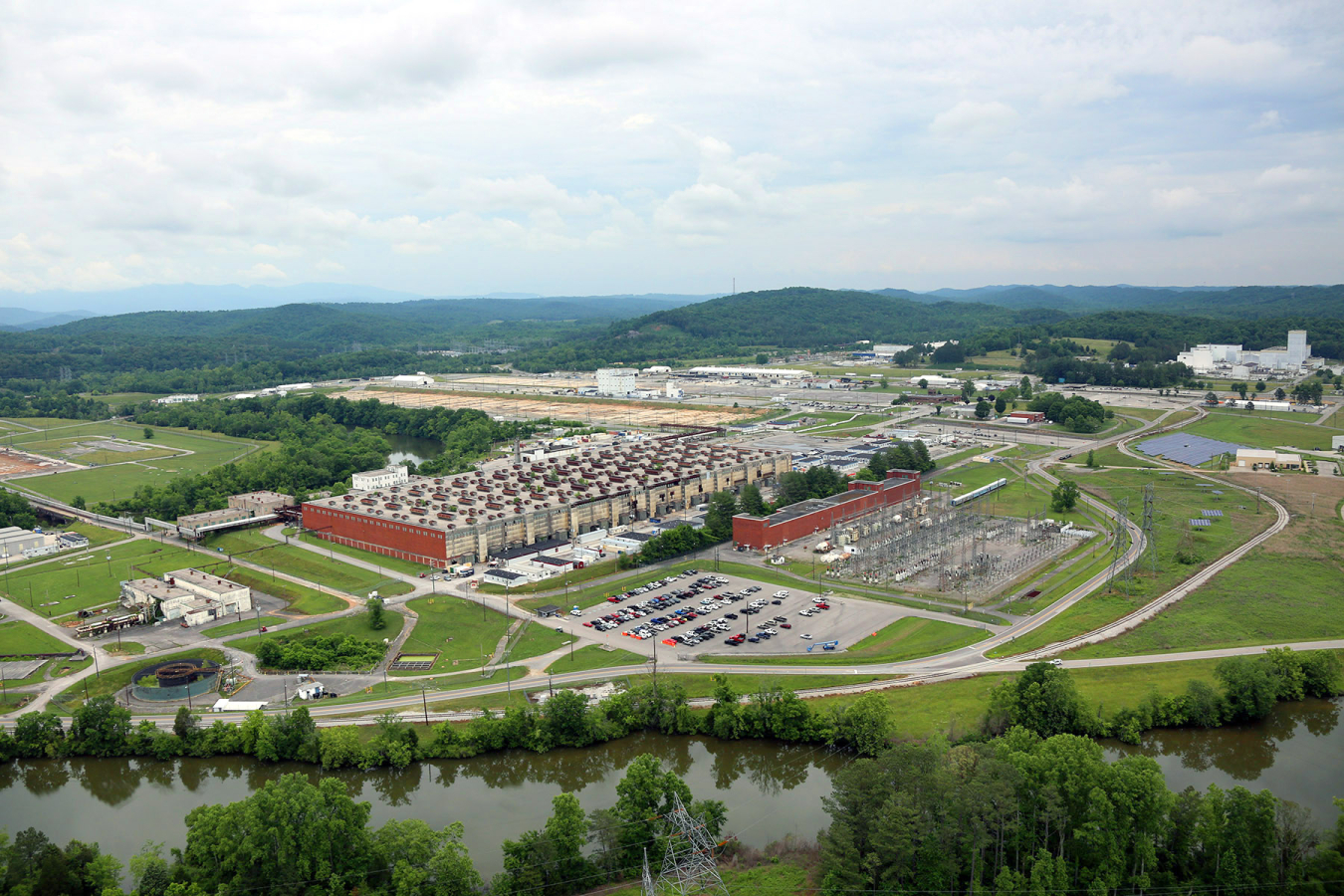
An aerial view of ETTP in June 2015. In the forefront is Building K-27, the last of five former gaseous diffusion uranium enrichment facilites at the site.
The following was an op-ed by OREM Manager Sue Cange that was featured in the Oak Ridger.
The Department of Energy’s Oak Ridge Office of Environmental Management has a simple mission. Since the late 1980s, we have made tremendous progress in removing legacies of contamination from past operations on the Oak Ridge Reservation. In five to seven years when we complete cleanup at the former K-25 plant, now known as the East Tennessee Technology Park, Oak Ridge will have what many believe will be East Tennessee’s premier site for new industries. With the recent arrival of CVMR and more than 600 new jobs, we are already witnessing the park’s potential.
Despite our many successes, we must remember that a lot of cleanup remains to be done in Oak Ridge. Our greatest environmental risk is located at Y-12, where we must reclaim large amounts of mercury lost to the environment during the Cold War. Similarly, several buildings at the Oak Ridge National Laboratory were contaminated during research operations conducted long ago, and we have a responsibility to eliminate the risk associated with those buildings. The leadership at Y-12 and ORNL agree that completing the cleanup mission is critical to the future vitality of Oak Ridge and its two largest employers.
To continue the cleanup of the Oak Ridge Reservation without delay, two things need to occur. First, we must construct a mercury treatment facility at Y-12. By 2019, the new facility will remove mercury from surface waters leaving the site and also remove mercury that will be released during the demolition of Y-12’s rapidly deteriorating, older buildings. Removing the mercury legacy is a priority goal for DOE and this community.
The second major need that will support uninterrupted cleanup is construction of a new onsite disposal facility, located adjacent to the current facility, which could accommodate the building debris from large- scale demolition at Y-12 and ORNL. Although most citizens never see it, the current disposal facility has operated with an exceptional safety record for 15 years. Over time, the ability to operate an on-site disposal facility has saved hundreds of millions of dollars in transportation costs that otherwise would be needed to ship the low-level waste by trucks to other states. Those savings have been poured back into actual cleanup, which has allowed us to accelerate our cleanup mission in Oak Ridge.
Building these new assets are a top priority, and we look forward to engaging the community throughout the process, just as we did when we constructed the first disposal facility. Together, we must look carefully at the consequences not just of building--but equally important--of not building, the two new facilities. Most agree that the likelihood of the Oak Ridge cleanup program being given additional funds to transport waste out of state is not realistic. Without the two new facilities, and without additional funds to transport waste, our timeline for completing the cleanup in Oak Ridge likely could be extended by more than twenty years, and require hundreds of millions more in taxpayer dollars.
Many community leaders believe Oak Ridge’s economic future is linked directly to how well, and how quickly, we can clean up DOE’s remaining environmental legacies. How we finish the cleanup job--including what we do, and what we do not do--is one of the most important discussions facing our community.
